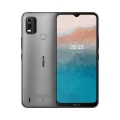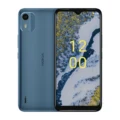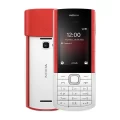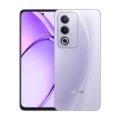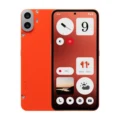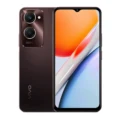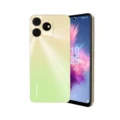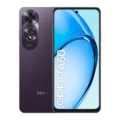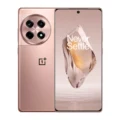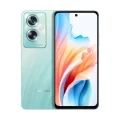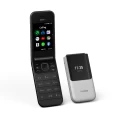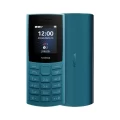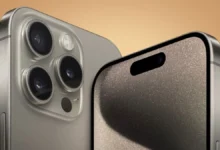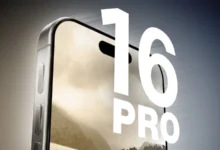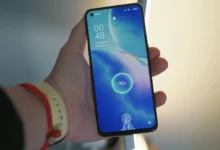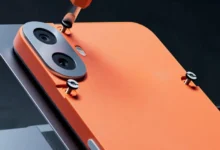Nokia XR20
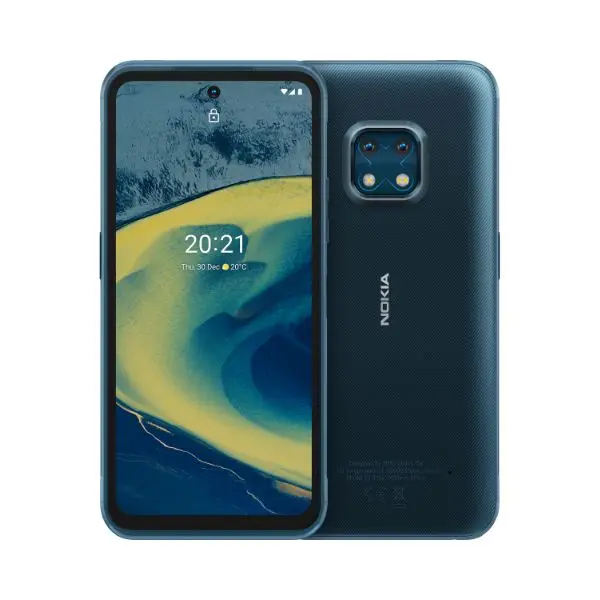


-
Display: 6.67 inches (16.94 cm)
-
CPU: Qualcomm Snapdragon 480
-
RAM: 6 GB
-
ROM: 128 GB
-
Camera: 48MP
-
Battery: 4630 mAh
Specifications
General
| Name | Nokia XR20 |
| Brand | Nokia |
| Model | XR20 |
| Announced | 27 July, 2021 |
| Release Date | 04 August, 2021 |
| Manufacturer Manufacturer Company: A manufacturer is a company engaged in the production of products. | Nokia |
| Made in Made in: Made in is a label or indication on a product that specifies the country where the product was manufactured or produced. | Finland |
Display
| Display Type | IPS LCD |
| Screen Size | 6.67 inches (16.94 cm) |
| Resolution | 1080 x 2400 pixels |
| Aspect Ratio | 20:9 |
| Pixel Density Pixel Density: Pixels per inch and pixels per centimetre are measurements of the pixel density of an electronic image device, such as a computer monitor or television display, or image digitizing device such as a camera or image scanner. | 395 ppi |
| Refresh Rate | 90 Hz |
| Multitouch Multitouch: Smartphone multitouch is a technology that allows the screen to recognize and respond to multiple touch points simultaneously. It enables users to perform gestures like pinch-to-zoom, rotation, and swiping with multiple fingers, enhancing the overall interactivity and usability of the device. | |
| Color Depth Color Depth: Color depth or colour depth, also known as bit depth, is either the number of bits used to indicate the color of a single pixel, or the number of bits used for each color component of a single pixel. When referring to a pixel, the concept can be defined as bits per pixel. | 1.07 billion colours |
| Bezel-less Display Bezel-less display: A bezel-less display minimizes or eliminates the non-display areas around the screen, providing a sleek, immersive look and maximizing the visual experience. | Yes, with a punch-hole display |
| Brightness | 550 nits |
| Screen Protection Screen Protection: Display protection refers to the various technologies and materials used to safeguard a smartphone's screen from damage such as scratches, cracks, and impacts. | Corning Gorilla Glass, Glass Victus |
| Screen to Body Ratio Screen-to-body ratio: Percentage of a device's front surface occupied by the display, indicating how efficiently the space is used for the screen. Higher ratios mean more immersive displays. | 76.8% |
Design
| Height | 171.6 mm |
| Width | 81.5 mm |
| Thickness | 10.6 mm |
| Weight | 248g |
| Material Built Material: The physical construction materials of a smartphone, influence its durability, weight, and aesthetic qualities. Common materials include metal, glass, plastic, ceramic, etc. |
Frame: Polymer composite, Aluminium side panels, Aluminium core Front: Corning® Gorilla™ Glass Victus™ |
| Colors | Granite, Ultra Blue |
| Waterproof | Yes, Water resistant (up to 60 minutes in a depth of 1.5 meters), IP68 |
| Ruggedness | Dust proof |
Camera
| Rear Camera | Dual |
| Resolution |
48 MP f/1.79, Wide Angle, Primary Camera 13 MP f/2.4, Ultra-Wide Angle Camera |
| Sensor | ISOCELL Plus |
| Autofocus | Yes |
| Rear Flash | Yes, Dual-color LED Flash |
| Image Resolution | 8000 x 6000 Pixels |
| Settings | Exposure compensation, ISO control |
| Shooting Modes |
Continuous Shooting High Dynamic Range mode (HDR) |
| Camera Features | SpeedWarp mode, Action Cam mode, Portrait mode, Night mode, Cinema mode, HDR, Beautification, Panorama, Watermark |
| Video Capture | 1920x1080 @ 30 fps |
| Front Camera | Single |
| Resolution | 8 MP f/2.0, Wide Angle, Primary Camera |
| Video Capture | 1920x1080 @ 30 fps |
Battery
| Capacity Battery Capacity: Battery capacity in smartphones refers to the amount of energy a battery can store, typically measured in milliampere-hours (mAh). It indicates how long a battery can power the device before needing a recharge. | 4630 mAh |
| Battery Type | Li-Polymer |
| Removable Removable Battery: A removable battery in a smartphone is a battery that users can easily take out and replace without tools. Removable batteries were more common in older models; modern smartphones favor non-removable batteries for sleeker designs and better water resistance. | |
| Wireless Charging | Yes |
| Fast Charging | Yes, 18W Fast Charging |
Performance
| Chipset Chipset: In smartphones, the chipset is like the device's brain, controlling everything from processing tasks to managing connectivity. It includes the CPU, GPU, modem, and other components, determining the device's performance and capabilities. Different smartphones use different chipsets made by companies like Qualcomm or MediaTek. | Qualcomm Snapdragon 480 |
| CPU CPU (Central Processing Unit): The CPU, commonly known as the processor, is responsible for processing instructions to perform various functions that enable a device to operate properly. Often described as the brain of computers, smartphones, and tablets, the CPU plays a crucial role in executing tasks and running applications on these devices. Smartphones and tablets rely heavily on their processors to carry out every task, from running apps to managing system operations. Therefore, the processor is an incredibly important factor to consider when selecting any type of computing device, including smartphones. | Octa-core (2 GHz, Dual core, Kryo 460 + 1.8 GHz, Hexa Core, Kryo 460) |
| Architecture Instruction Set Architectures (ISAs): In the context of smartphones, "architecture" refers to the design and structure of the processor, which determines how it processes information and executes instructions. This encompasses the processor's instruction set, memory management, and overall design principles. One common term related to architecture is "64-bit architecture," which has significant implications for performance and capabilities. | 64 bit |
| Fabrication Semiconductor Fabrication: Fabrication in the context of semiconductors and microprocessors refers to the process of manufacturing integrated circuits (ICs) or chips. This involves creating the physical structures of a chip, such as transistors and other electronic components, on a silicon wafer. The term "fabrication" is often used interchangeably with "process node" or "technology node," which indicates the manufacturing technology used to create these chips. | 8 nm |
| GPU GPU (Graphics Processing Unit): The GPU in a smartphone is a specialized processor designed to handle the rendering of images, animations, and video, as well as other tasks involving graphics and visual data. It works alongside the CPU (Central Processing Unit) to deliver a smooth and visually rich experience. | Adreno 619 |
| RAM Random Access Memory (RAM): RAM is a type of computer memory that is used to store data temporarily while a device is in use. RAM is a critical component in smartphones, enabling fast access to data, smooth multitasking, and efficient operation of applications. The amount and type of RAM can significantly impact the performance and user experience of a smartphone. | 6GB |
| RAM Type | LPDDR4X |
| Operating System Operating System (OS): The operating system is the core software that manages all the hardware and software resources on a smartphone. It provides a platform for running applications and controls basic functions such as managing memory, processing tasks, and handling input/output operations. | Android v11 |
Storage
| ROM ROM (Read-Only Memory): In the context of smartphones and other electronic devices, ROM typically refers to the built-in storage where the operating system, system files, and pre-installed apps are stored. | 128GB |
| MicroSD Card MicroSD Card Slot: A microSD card is a small, portable storage device used to expand the storage capacity of electronic devices, including smartphones, tablets, digital cameras, and more. It's inserted into a device's MicroSD card slot to store extra photos, videos, music, and other data. | Yes, microSDXC (uses shared SIM slot) |
| Expandable Storage | Yes, Up to 512 GB |
| Storage Type Storage Type: In smartphones, storage types typically include built-in eMMC or UFS (Universal Flash Storage) for internal storage, and expandable storage options like MicroSD cards. | UFS 2.1 |
Network
| Number of SIM | Dual SIM |
| SIM Size | Nano (Hybrid) |
| SIM Slot Type | 1 nano SIM slot + 1 nano SIM/micro SD slot |
| Network Support | 2G, 3G, 4G, 5G |
| Network Speed | HSPA, LTE-A, 5G |
| Technology | GSM / CDMA / HSPA / EVDO / LTE / 5G |
| VoLTE VoLTE (Voice over LTE): VoLTE is a technology that allows voice calls to be made over a 4G LTE network, rather than the traditional 2G or 3G networks. In summary, VoLTE enhances call quality and functionality by using the 4G LTE network for voice communications. | |
| 2G Bands 2G (Second Generation): 2G is a wireless technology standard for mobile telecommunications that was introduced in the 1990s and enabled the transmission of digital voice and data services, using digital transmission instead of analog. It has slower data speeds compared to later generations like 3G and 4G. | GSM 1800 / 1900 / 850 / 900 MHz |
| 3G Bands | UMTS 1900 / 2100 / 850 / 900 MHz |
| 4G Bands |
TD-LTE 2600(band 38) / 2300(band 40) / 2500(band 41) FD-LTE 2100(band 1) / 1800(band 3) / 2600(band 7) / 900(band 8) / 700(band 28) / 1900(band 2) / 1700(band 4) / 850(band 5) / 700(band 13) / 700(band 14) / 800(band 20) / 1900(band 25) / 850(band 26) / 2300(band 30) |
| 5G Bands |
FDD N1 / N2 / N3 / N5 / N7 / N28 TDD N41 / N66 / N77 / N78 |
| GPRS GPRS (General Packet Radio Service): General Packet Radio Service is a packet-oriented mobile data standard on 2G and 3G cellular communication networks' global system for mobile communications (GSM). In summary, GPRS is a mobile data service that enhances the data capabilities of 2G and 3G networks, providing basic internet and multimedia services. | |
| EDGE EDGE (Enhanced Data rates for GSM Evolution): Enhanced Data rates for GSM Evolution is a technology used to improve the data transmission rates of 2G GSM networks. In summary, EDGE boosts the data transmission capabilities of 2G networks, providing faster speeds and improved performance for mobile internet access. |
Connectivity
| Wi-Fi Wi-Fi: Wi-Fi is a wireless networking technology that allows electronic devices to connect to a local area network (LAN) wirelessly, typically using the 2.4 gigahertz (GHz) or 5 GHz radio frequency bands. | Yes, Wi-Fi 6 (802.11 a/b/g/n/ac/ax) 5GHz, MIMO |
| Wi-Fi Features | Mobile Hotspot |
| Bluetooth | Yes, Bluetooth v5.1 |
| GPS GPS (Global Positioning System): GPS originally Navstar GPS, is a satellite-based radio navigation system. It is a satellite-based radio navigation system, GPS permits users to determine their position, velocity, and the time 24 hours a day, in all weather, anywhere in the world, In order to locate your position, your device or GPS receiver must have a clear view of the sky. | Yes with A-GPS, Glonass |
| NFC NFC (Near Field Communication): NFC is a wireless technology that enables devices like smartphones and payment terminals to communicate when they're close together, facilitating contactless transactions and data transfer. | Yes |
| OTG OTG (On-The-Go): The full form of OTG is On-The-Go . OTG is a USB (Universal Serial Bus) standard that allows USB devices to be connected. Without using a computer connection, USB OTG items can connect. You can connect your mobile phone or tablet to various gadgets using a USB OTG link. | Yes |
| Browser Browser: A browser is a software application used to access and view information on the World Wide Web. It allows users to navigate through websites, view web pages, and interact with various online content such as text, images, videos, and other multimedia resources. | HTML5 |
| IR Blaster Infrared (IR) blaster: Some smartphones may come with an infrared (IR) blaster, which allows your smartphone to act as a universal remote control for controlling other devices, such as TVs, set-top boxes, and home appliances, that use infrared technology for communication. | No |
| USB Interface | USB Type-C |
Sensors
| Fingerprint Fingerprint: A fingerprint, in the context of smartphones and other devices, refers to a biometric authentication method that uses the unique patterns on a person's fingertip to verify their identity. | |
| Face Unlock Facial Recognition: Face Unlock is a biometric authentication feature found in many smartphones. It uses facial recognition technology to identify and authenticate users, allowing them to unlock their devices simply by looking at the front-facing camera. | |
| Other Sensors | Accelerometer (G-sensor), Ambient light sensor, Barometer, e-Compass, Gyroscope, Proximity sensor |
Multimedia
| FM Radio | |
| Loudspeaker | Yes |
| Earphone Jack | 3.5 mm |
| Voice Recorder | Yes |
| Video Playback | MP4, MKV, WEBM, 3GP |
| Audio Playback | MP3, FLAC, APE, AAC, OGG, WAV, AMR, AWB |
| Image Formats | JPEG, PNG, GIF, BMP, WBMP |
The Nokia XR20 is a budget-friendly smartphone with a premium feel. In this review, I’ll be diving into its features, performance, and overall value to help you decide if it’s the right choice for you.
NOKIA XR20 DETAILS
The Nokia XR20 is a premium smartphone that is packed with a range of advanced features. The phone has a sleek, modern design that is both stylish and functional. It boasts a large 6.7-inch display that provides a vivid and immersive viewing experience, making it ideal for watching movies, playing games, or browsing the web. The screen is protected by a layer of Corning Gorilla Glass Victus, which provides added durability and resistance against scratches and cracks.
The XR20 is powered by a powerful octa-core Qualcomm Snapdragon 480 processor, which delivers fast and smooth performance for all your daily needs. With 6GB of RAM and 128GB of storage, you’ll have plenty of space to store all your apps, photos, and videos. The phone also supports expandable storage via a microSD card, so you can easily expand your storage capacity as needed.
The camera system on the Nokia XR20 is a true highlight of the phone. It features a triple camera setup, with a 48-megapixel primary camera, and a 13-megapixel ultra-wide camera sensor. The cameras work together to produce stunning images with rich detail and accurate colors. The phone also includes an 8-megapixel front-facing camera, which delivers high-quality selfies and video calls.
Another standout feature of the XR20 is its long-lasting battery life. The phone is equipped with a large 4630mAh battery, which provides all-day battery life, even with heavy usage. And if you do need to top up your battery, the phone has 18W wired fast charging and 15W wireless charging compatibility, so you can get back to using your phone quickly.
The Nokia XR20 also offers a range of useful features, such as a Side-Mounted fingerprint sensor, which provides added security and convenience. The phone is also water and dust resistant, so you can take it with you to the beach, on hikes, or anywhere else your adventures take you.
Pros and Cons of Nokia XR20
When considering buying a new device, one of the most important considerations is whether it will meet your needs and be worth the investment. However, it’s also important to be aware of the device’s potential downsides before making your decision. In this guide, we’ll look at the pros and cons of the Nokia XR20 so you can make an informed decision.
| Pros | Cons |
|---|---|
| Large and vivid display | High price point |
| Powerful performance | No FM Radio |
| Excellent camera system | No official IP rating for water and dust resistance |
| Long-lasting battery life | Limited app support for new smartphones. |
| Corning Gorilla Glass Victus display protection |
Our Verdict
In conclusion, the Nokia XR20 is a premium smartphone that offers a range of advanced features and exceptional performance. With its stunning display, powerful processor, triple camera setup, long-lasting battery life, and water and dust resistance, it’s the perfect phone for anyone who wants a device that can keep up with their busy lifestyle.
Frequently Asked Questions
Do you have any questions about this phone? There we have included the main questions and answers about this phone. So, let’s begin now.
Yes, the Nokia XR20 is water and dust resistant, but it does not have an official IP rating, which means it’s unclear how well it will perform in extreme weather conditions.
The Nokia XR20 has 128GB of storage, and it also supports expandable storage via a microSD card. Up to 512GB.
The camera system on the Nokia XR20 is a highlight of the phone, featuring a dual camera setup with a 48-megapixel primary camera, and a 13-megapixel ultra-wide camera sensor. The cameras work together to produce stunning images with rich detail and accurate colors.
The Nokia XR20 is equipped with a large 4630mAh battery, which provides all-day battery life, even with heavy usage. And if you do need to top up your battery, the phone has 18W wired fast charging and 15W wireless charging compatibility, so you can get back to using your phone quickly.
Yes, the Nokia XR20 is good for gaming, thanks to its powerful octa-core Qualcomm Snapdragon 480 processor, 6GB of RAM, and large and vivid display. The phone delivers fast and smooth performance, making it an ideal choice for gaming.
Nokia XR20 price starts from BDT. 49,990. Nokia XR20 internal storage base variant of 6 GB Ram, 128 GB Internal Memory (ROM). Nokia XR20 is available in Ultra Blue, and Granite Gray colors.
Reviews
Disclaimer Note
The information on this page may not be entirely accurate or up-to-date. Product prices are approximate and may vary based on taxes, import duties, and other factors.


